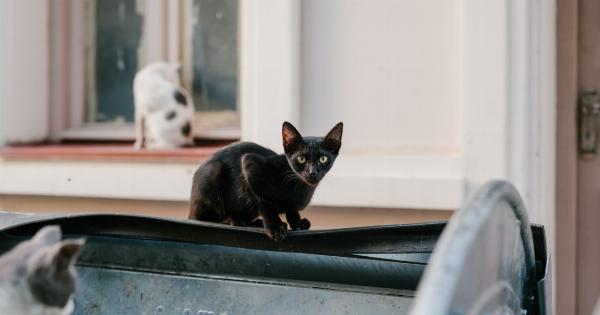Cats are mysterious creatures with fascinating behavior. It’s not always easy to understand what they’re thinking or feeling, but one way to learn more about them is to observe their body language.
Here is a guide to help you decipher the on-off switch of your furry friend.
The Tail
The tail is a cat’s most expressive body part, and there are many different positions a cat can hold its tail.
1. The Straight Tail
A straight tail is a sign of confidence and contentment. When your cat happily greets you at the door with a straight tail, it’s showing you that it’s happy to see you and feels safe and secure in your presence.
2. The Puffed Tail
When your cat puffs out its tail, it’s usually a sign that it’s feeling threatened, scared, or unsure. This can happen when your cat encounters a new person, animal, or object that it’s not familiar with.
It’s important to give your cat space and time to adjust to new situations so that it can feel safe again.
3. The Swishing Tail
Cats use their tails to communicate a range of emotions, including excitement, apprehension, and annoyance. A tail that’s swishing back and forth quickly usually indicates that your cat is annoyed or irritated.
This could be due to something as simple as a noisy environment or an interruption in its daily routine.
4. The Curled Tail
A curled tail is a sign of relaxation and comfort. Your cat may curl its tail around its body or tuck it under its legs when it’s feeling content and at ease. This is a good indication that your cat is happy and relaxed around you.
The Ears
Cats use their ears to communicate their mood and intentions. Here are a few ear positions to watch out for:.
1. The Forward Ears
When your cat’s ears are pointing forward, it’s usually a sign that they’re alert and engaged. Your cat may be interested in something that’s going on around them or that’s caught their attention.
This is a good sign that your cat is feeling curious and playful.
2. The Flat Ears
Flat ears are a sign of fear or aggression. If your cat is feeling threatened or scared, it may flatten its ears to show that it’s on the defensive.
If you see your cat’s ears flattening, it’s important to give your cat space and time to calm down.
3. The Backward Ears
Backward ears can indicate that your cat is feeling relaxed and comfortable. It’s common for cats to hold their ears back slightly when they’re napping or feeling calm and relaxed.
The Eyes
Cats use their eyes to communicate a range of emotions, from curiosity and excitement to fear and anger. Here are a few things to watch out for:.
1. The Dilated Pupils
Dilated pupils indicate that your cat is feeling excited or stimulated. This could be due to something as simple as playing with a new toy or being in a new environment.
If your cat’s pupils are dilated, it’s a good sign that they’re feeling playful and engaged.
2. The Constricted Pupils
Constricted pupils are a sign that your cat is feeling threatened or scared. When cats are feeling threatened, they may narrow their pupils to help them focus on potential threats and prepare to defend themselves.
3. The Blinking Eyes
When your cat blinks slowly, it’s usually a sign of relaxation and trust. Blinking is a way for your cat to show that it’s comfortable and at ease around you.
The Body
A cat’s body language can also communicate its mood and intentions. Here are a few things to look out for:.
1. The Arched Back
When a cat arches its back, it’s usually a sign of fear or aggression. This is a defensive posture that cats use to make themselves look bigger and more intimidating.
If your cat’s back is arched, it’s important to give them space and time to calm down.
2. The Rolled Over Belly
When your cat rolls over onto its back and exposes its belly, it’s usually a sign of trust and comfort. This is a vulnerable position for cats, so it’s a good sign that your cat feels safe and content around you.
3. The Tense Body
When a cat’s body is tense and rigid, it’s usually a sign that it’s feeling threatened or scared. This could be due to a loud noise or a sudden movement that has startled them.
If your cat’s body is tense, it’s important to give them space and time to calm down.
Conclusion
Understanding your cat’s body language can help you communicate more effectively with your furry friend. By paying attention to their tail, ears, eyes, and body, you can learn a lot about how they’re feeling and what they need from you.
Remember to give your cat space and time to adjust to new situations, and always respect their boundaries and preferences. With a little patience and observation, you can develop a deep understanding and bond with your beloved feline companion.





























